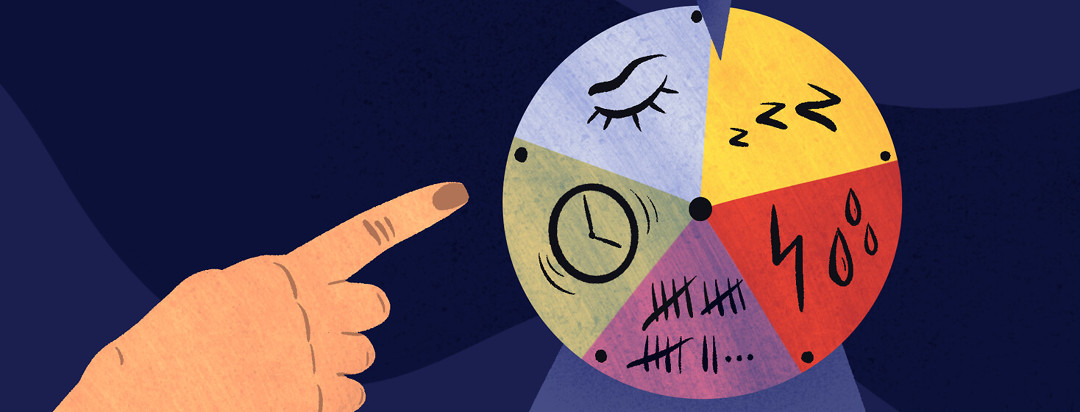Migraines or Cluster Headaches? 3 Ways to Tell the Difference
It’s possible to have multiple headache disorders, and doctors often misdiagnose even those with just one form of head pain. Cluster headaches were once thought to be a man's disease with a 9 to 1 ratio of men to women with the condition. We know now that's this statistic was utterly wrong. Many women were misdiagnosed with migraine disease because of it. Today, the ratio is closer to 2 or 3 to 1, but not all medical professionals got the memo.
I've experienced this firsthand with the ER doctors who told me I had migraine attacks, despite having an episodic cluster headache diagnosis. Even the nurses at my neurologist's office refused to accept that I had cluster headaches until my doctor confirmed it. Children have an even harder time getting people to listen to their headaches.
What type of head pain is it?
The best way to figure out which type of head pain a patient experiences is... Listen. To. The. Patient. Anna Williams shares her story of living with migraine disease and cluster headaches and how it was challenging to get someone to understand she has two separate disorders.
Migraine versus cluster headache
Cluster headaches are often lumped in with migraines, and migraines can sometimes be confused with cluster headaches. (Don't even get me started on the "cluster migraine" debacle... it is not a headache disorder, but uninformed medical professionals continue to use the phrase as a diagnosis).
What are the differences?
I spoke with Dr. Mark Burish, a neurologist at the Will Erwin Headache Research Center at the University of Texas Health Science Institute, about the differences between cluster headaches and migraine disease. The two conditions overlap in a few ways, but there are markers to tell which one is which.
How long is an attack?
"I think the best way to differentiate between migraine and cluster headache is not the nausea and light sensitivity and changes on the face, because both cluster headache and migraine can get that," said Dr. Burish. "It's more of how long they last. Cluster headaches are three hours or less. Migraines are four hours or more."
Cluster headaches tend to occur in "clusters" for 85-90% of patients who are episodic, but the remaining 10-15% are chronic and experience the attacks year-round.1 Whether you're chronic or episodic, these attacks can strike up to 8 times a day and last 15 minutes to 3 hours. Mine last about 90 minutes, and I get 4 per day when I'm in a cycle. That can jump to 6 if I use sumatriptan injections. Whereas a single migraine attack can last up to 4 days.
The length of the attack is one of the diagnostic criteria for both migraine disease and cluster headache.2,3 A qualified neurologist or headache specialist should consider this before diagnosis. Don't let your medical provider diagnose you based on your gender, race, or age.
Are you in motion or still?
"Cluster headache patients tend to move around quite a bit during the headache. Migraine patients, moving around makes it much worse, so they try to stay still usually," said Dr. Burish.
During a cluster headache attack, I prefer to rock back and forth and tend to moan or scream when the pain is peaking. That is uniform across the cluster headache patients I've met over the years. Laying down is like torture during an attack because the searing pain makes you move. Bob Wold, Founder of Clusterbusters, likened it to slamming your finger in a car door: You have to shake your hand to cope with the pain. It's similar with cluster headaches.
Migraine attacks typically have you in a dark, quiet room because sound and light make it worse. I've had status migraines in the past, and they drained me for five days and had me wanting to stay in bed.
What triggers an attack?
Migraine disease can come with a variety of triggers ranging from food to smells to activities. Cluster headache triggers are more specific. Alcohol is the overarching trigger among "clusterheads," as we call ourselves. At the annual Clusterbusters conference, Dr. Larry Schor recounted a New Year's Eve where he had one sip of champagne, and that was enough to send him into the throes of a cluster headache attack. Outside of alcohol, REM sleep is an overarching trigger, along with elevation changes.
Of course, there are other aspects that separate these two diagnoses, such as the treatments. Oxygen therapy is the most effective abortive treatment for cluster headaches but does little to nothing to treat migraine attacks. Cluster headaches are strictly one-sided, while migraines can be one-sided or occur on both sides at once. The location of the pain is more specific with clusters (around the eye and temple), but migraine disease can affect more areas of the head, face, and neck.
Do you question your diagnosis?
It's only natural to question whether your diagnosis is correct if your treatment isn't working or the symptoms don't line up. If you think you were misdiagnosed with migraine disease or cluster headaches, see your headache doctor or get a referral for one in your area from your primary care physician.

Join the conversation